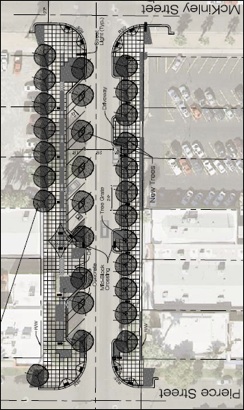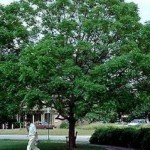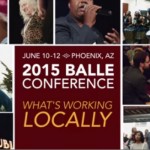(Update – Phoenix has agreed to save the ficus.)
(Local activist/resident Sean Sweat of Downtown Dog Park fame lives next door to this project and attended all related council meetings. This article reflects his opinion(s) alone.)
If you haven’t noticed the recent construction, First Street is getting a facelift.
Make it walkable
The City’s goal with the project is pedestrian improvement via narrowing of the road and widening of the sidewalks. There were three related public meetings of questionable success, with funds coming from $1M of use-it-or-lose-it bond money burning a hole in City Hall’s pocket. The project runs up First Street from Fillmore north to Hance Park, though the construction (starting at the south) is currently only partially funded.
 The project found an obstacle when the City determined that there were utilities underneath the west sidewalk. This was a problem because it meant that vegetation couldn’t be planted there (namely trees with deeper root structures). The City’s solution was to incorporate angled parking on the west side of the road and parallel parking on the east side. This allows them to plant westside trees at the end of planter arms extending between every other angled parking space.
The project found an obstacle when the City determined that there were utilities underneath the west sidewalk. This was a problem because it meant that vegetation couldn’t be planted there (namely trees with deeper root structures). The City’s solution was to incorporate angled parking on the west side of the road and parallel parking on the east side. This allows them to plant westside trees at the end of planter arms extending between every other angled parking space.
Shady cars
Problem is, these westside trees cover parked cars and don’t do squat for pedestrians on the sidewalk during the oppressive summer lunchtime sun. I also wonder if it was considered how large such trees could grow given that they don’t have any surrounding soil through which their roots can breathe. I’m sure it depends on the type of tree planted, but generally the answer “is not very large”. Expect these trees to be unimpressive, wispy desert trees that give the impression of a half-assed project that missed its mark.
At least they’ll be honest trees.
Well, except for the massive, mature, lush, draught-resistant ficus that already exists on the west side of First Street just south of McKinley, providing thick copious shade to anyone that ambles past it. The City plans to remove this one because it “doesn’t match their design palette” and because it resides atop a storm drain. (Remember those pesky utilities underneath the western sidewalk.)
What happened?
But those are ridiculous excuses from a City Hall that is obviously lacking the urban transportation knowledge required to truly transform our downtown. The storm drain should be abandoned: utilities should be placed under the road. This ensures that when future maintenance of the utilities is required, pedestrian flow and business access is impacted less, not to mention the cost difference between removing and replacing simple asphalt versus concrete sidewalks and curb cuts is substantial.
Fact is, any quality streetscape project incorporates the relocation of utilities (if needed). Yet this one doesn’t. The primary excuse given to me is that the bond money is designated for a streetscape project and therefore cannot be used to move utilities. But that’s a lie because utility relocation is what allows one to recreate the streetscape, as proven in many cities not named “Phoenix”.
Quantity over quality?
The only conceivable explanation is because the City wants the bond money to superficially go further down First Street, regardless of the long-term failings or the self-imposed constraints forcing a sub-par design. The City should instead should be doing the project right the first time, even if that means covering less area in this first phase.
The project also neglects obvious and common pedestrian improvements such as pavers instead of concrete (think Mill Avenue) or at least pavers for crosswalks to send vehicles a clear message to expect pedestrians (again, think Mill Avenue).
But it does reportedly add benches, and I’m sure everyone reading this has walked First Street at one point or another and thought, “Damn, if there was only a bench here I could rest on…”
Contact Sean at sean.sweat@gmail.com








Good to see that someone’s started a petition to save the ficus tree:
http://www.change.org/petitions/save-the-phoenix-ficus
Sign it and support a livable, walkable downtown! 🙂
Too bad that our residents don’t have this same energy, commitment, and excitement when it comes to big picture items like education and/or job creation in our city. I’m all for saving trees, but if this power was harnessed for something with scale we would be unstoppable.
Be careful–you’re awfully close to being labeled an “activist” (or maybe that was a joke by the DPJ staff!)…LOL!
I agree with the premise of your argument with the minor alteration of doing the “right project” correctly as well. The project release stated that they were doing some water line relocation already, and obviously some storm water sewer redesign (which should be reconsidered as a means to proved local vegetation with much needed water, by using permeable payment and sub-terrain retention basins) is already required, which leaves the sewer line as the other utility in our way.
One possibility that could have been considered would be to lay the pipe for a new sewer line in the middle of the street and connect it when it is all complete, simple abandoning the existing line. Unfortunately, without a developer sticking money in the face of Phoenix’s politicians, they have no motivation to think ahead of current needs.
One aspect of the process that I found very disheartening is how the city seems to have determined who is a stakeholder when it comes to listening and implementing comments and suggestions. Land owners and business owners are obvious stakeholders (even though many land owners don’t know what streetscape elements produce the best context for their tenant’s customers), but less considered are the patrons of those businesses and the pedestrians themselves who will use the new elements.
Last point: the land that the ficus tree sits in front of is owned by the city, which to means that the citizens and residents of Phoenix actually have the right to determine what should be there and how the property should be used. If the tree must be removed because it has already damaged the sewer lines, I believe it should be relocated to the boulevard just west of 1st St on McKinley on the north edge of the same property, thus preserving the value that tree has provided for many years. BTW, there will be some other shade trees to be removed in this process that will not be replaced by similar shade giving trees, to the detriment of the pedestrians and stakeholders.
not the A-word!!
When I used to walk from my job at City Hall to Verde Restaurant last summer, I would always look forward to making it to this tree for the shade it provided. Ficus trees are so gorgeous and this one must be pretty old to be as big as it is. It’s good to see someone has started a petition, but when will the petition be delivered? Oh my gosh, I don’t want anything to happen to that tree!
I believe that each time someone signs the petition, the recipients get sent an email, real-time.
Yes they do. I signed the petition and got a reply from someone at the city a few hours later.
“unimpressive, wispy desert trees”
Dude, why the hate on the native vegetation? Shouldn’t native trees be part of the solution of creating a vibrant downtown that actually resembles the desert we all live in?
I probably could have phrased that better: “unimpressive because they won’t be able to grow very well due to the lack of aerating soil around them (they’ll be stuck out in the middle of the road via an extending concrete arm), and “wispy” because, well, they’re wispy and don’t provide adequate shade because of their leaf structure. Desert trees are great for decorate uses or over grassy areas. They do not meet the transportation needs of pedestrians over hardscape, so over hardscape we have to use leaves with broader leaves and/or thicker canopies.
Actually, they’d probably grow pretty well with the amount of water they’ll get. I still think there’s a case to be made for blending into and embracing the environment you live in instead of trying to make the desert into Michigan. If Phoenix wants a soul, it can’t become a copy of something else.
And if you don’t think that desert trees are only great for decoration or grass…well, we need to get you out of the damn city a bit more often.
we can’t ignore function. Desert trees are not viable options for shading hardscape. They weren’t designed for that, and they aren’t well adapted to it. Are you arguing that desert trees provide the shade needed for a pedestrian at 1pm in August?
maybe it’s worth adding that there are Arizona trees that can provide shade, even a few low-water-use AZ trees that provide trees as I understand it — those don’t tend to be the trees used by the City though, as evidenced by our light rail stations where many of the trees are pretty much worthless to people waiting in the heat.
No, I’m arguing that we shouldn’t completely divorce the built environment from the natural one we still live in. Developing a strong downtown core, revitalizing community, and allowing for better human-powered and mass transportation options are great goals that I support. Do we need to recreate or otherwise import the Upper Peninsula to achieve that, or can we think creatively about how to incorporate local flavor and design elements into our city projects, thereby creating its own unique character. I’m not saying you believe differently, I just wanted to the use the opportunity of your word choice to make this point.
It’s mean to pick on an engineer’s poor word choices!
😉
Update: the massive community response convinced the City of Phoenix to save the tree! http://twitpic.com/5xe6km
High-five Rick Naimark if you ever see him.
awessssssome!!!!! so very glad to hear this! 🙂 🙂 🙂
Soooo VERY very very glad to hear this!!!
What a waste of community efforts. Congratulations on saving 1 tree – – so many bigger fish to fry is city. Looking forward to us working together to challenge something meaningful.